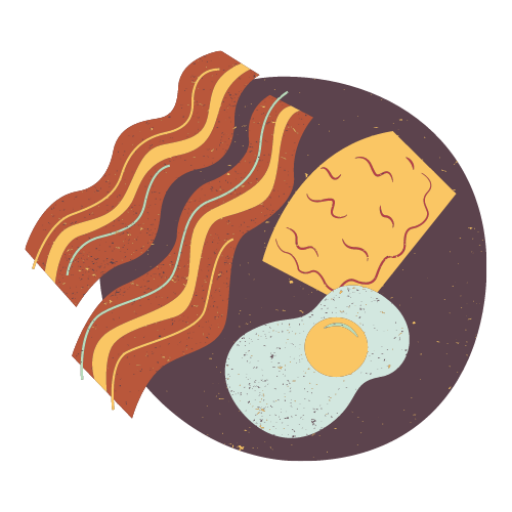A low-FODMAP diet can be challenging, especially when it comes to breakfast options. Many traditional morning meals contain high-FODMAP ingredients that may trigger digestive symptoms in sensitive individuals. However, there are numerous delicious and satisfying breakfast recipes that naturally align with low-FODMAP guidelines.
These 15 breakfast recipes offer a variety of tasty options for those following a low-FODMAP diet, providing essential nutrients and energy to start the day. From protein-rich egg dishes to fiber-packed chia puddings and gluten-free baked goods, these recipes cater to diverse preferences while avoiding common trigger foods. By incorporating these breakfast ideas into their routine, individuals can enjoy flavorful morning meals without compromising their dietary needs.
1) Carrot and Zucchini Fritters
Carrot and zucchini fritters offer a delicious low FODMAP breakfast option. These savory pancakes combine grated carrots and zucchini with gluten-free flour, spices, and eggs to create a nutritious morning meal.
To prepare, mix grated carrots and zucchini in a bowl with gluten-free flour, baking powder, and seasonings like nutmeg and salt. Add whisked eggs and garlic-infused oil for flavor without triggering FODMAP sensitivities.
Form the mixture into small patties and fry them in a pan with olive oil until golden brown on both sides. The fritters cook quickly, making them ideal for busy mornings.
These fritters pack a nutritional punch, offering fiber, vitamins, and minerals from the vegetables. They also provide protein from the eggs and gluten-free flour, helping to keep you satisfied throughout the morning.
Serve the fritters warm, garnished with chopped chives or the green parts of spring onions for a FODMAP-friendly flavor boost. They pair well with a side of lactose-free yogurt or a simple green salad for a complete breakfast.
2) Quinoa and Spinach Porridge

Quinoa porridge offers a nutritious and low-FODMAP breakfast option that can be easily customized. This hearty dish combines protein-rich quinoa with iron-packed spinach for a satisfying start to the day.
To prepare, cook quinoa in water or a low-FODMAP milk alternative like almond or lactose-free milk. Once the quinoa is tender, stir in finely chopped spinach leaves and allow them to wilt from the residual heat.
Season the porridge with a pinch of salt and add flavor with low-FODMAP spices such as cinnamon or ginger. For added sweetness, incorporate a small amount of maple syrup or a sprinkle of coconut sugar.
Top the porridge with low-FODMAP fruits like strawberries or blueberries for extra nutrients and flavor. A handful of pumpkin seeds or chopped walnuts can provide a pleasant crunch and healthy fats.
This quinoa and spinach porridge is not only gentle on sensitive stomachs but also provides a balanced mix of carbohydrates, protein, and vegetables to fuel the morning. It can be prepared in advance and reheated for convenience on busy days.
3) Chia Seed Pudding with Berries

Chia seed pudding with berries is a delicious and nutritious low FODMAP breakfast option. This simple dish combines chia seeds with lactose-free milk or plant-based alternatives like almond or coconut milk.
The chia seeds absorb the liquid, creating a creamy pudding-like texture. A small amount of maple syrup can be added for sweetness, while vanilla extract enhances the flavor profile.
Berries make an excellent topping for chia pudding. Strawberries, blueberries, and raspberries are all low FODMAP fruits in appropriate serving sizes. They add natural sweetness and a burst of freshness to the dish.
Chia seeds are packed with fiber, protein, and omega-3 fatty acids. This combination of nutrients helps promote satiety and provides sustained energy throughout the morning.
Preparation is straightforward. Mix the chia seeds with the chosen milk and sweetener, then refrigerate overnight. In the morning, top with fresh berries and enjoy a tasty, gut-friendly breakfast.
This versatile recipe can be customized with different low FODMAP fruits or a sprinkle of nuts for added crunch. It’s an easy make-ahead option for busy mornings.
4) Egg and Sweet Potato Bake

This hearty breakfast dish combines nutrient-rich sweet potatoes with protein-packed eggs. Sweet potatoes are naturally low in FODMAPs, making them an excellent choice for those following a low FODMAP diet.
To prepare this dish, sweet potato spirals are arranged in a baking dish, creating a nest-like structure. A well is formed in the center to cradle the egg. Cheese is sprinkled over the sweet potatoes, adding flavor and richness.
The raw egg is then carefully placed into the sweet potato well. More cheese is added on top of the egg for extra tastiness. Salt and pepper are used to season the dish to taste.
The bake is then placed in a preheated oven at 350 degrees Fahrenheit. Cooking time ranges from 15 to 20 minutes, depending on personal preference for egg doneness. This versatile recipe can be customized with additional low FODMAP herbs or spices for variety.
This egg and sweet potato bake offers a satisfying blend of textures and flavors. It provides a balanced combination of complex carbohydrates and protein, making it an ideal choice for a filling breakfast or brunch option.
5) Kale and Banana Smoothie

This nutrient-packed smoothie combines kale and banana for a low-FODMAP breakfast option. Kale is rich in vitamins and minerals, while bananas provide natural sweetness and a creamy texture.
To prepare, blend a handful of kale leaves with half a ripe banana, a cup of low-FODMAP milk such as almond milk, and a few ice cubes. For added protein, consider including a tablespoon of chia seeds or a spoonful of peanut butter.
The smoothie can be customized with other low-FODMAP ingredients like blueberries or a dash of cinnamon for extra flavor. This quick and easy breakfast is not only gentle on sensitive stomachs but also provides a boost of energy to start the day.
For those who find the kale flavor too strong, baby spinach can be substituted as a milder alternative. The smoothie can be prepared in advance and stored in the refrigerator for a convenient grab-and-go breakfast option.
6) Coconut Yogurt with Strawberries

Coconut yogurt with strawberries offers a delicious low-FODMAP breakfast option. This dairy-free alternative provides a creamy base for a satisfying morning meal.
To prepare, start with plain coconut yogurt, which is naturally low in FODMAPs. Choose a brand without added sweeteners or artificial ingredients for the best results.
Fresh strawberries are an excellent topping choice, as they are low in FODMAPs and provide natural sweetness. Slice or dice the strawberries and add them generously to the coconut yogurt.
For added texture and nutrition, consider sprinkling some chia seeds on top. Chia seeds are low-FODMAP and offer beneficial omega-3 fatty acids and fiber.
This simple combination creates a balanced breakfast that is both tasty and gentle on the digestive system. It provides a good mix of healthy fats, protein, and carbohydrates to start the day.
For those who prefer a sweeter taste, a small drizzle of pure maple syrup can be added. Remember to stick to low-FODMAP serving sizes to maintain the dish’s digestive benefits.
7) Almond Butter and Banana on Rice Cakes

Rice cakes topped with almond butter and banana slices make for a delicious and satisfying low-FODMAP breakfast. This simple combination offers a balance of carbohydrates, healthy fats, and natural sweetness.
Choose plain brown rice cakes as the base for this recipe. Spread a generous layer of almond butter on each rice cake. Almond butter is a good source of protein and healthy fats, providing sustained energy throughout the morning.
Slice a ripe banana and arrange the pieces on top of the almond butter. Bananas are low-FODMAP in small servings and add natural sweetness to the dish. For extra flavor and nutrition, consider adding a sprinkle of hemp seeds or a drizzle of honey.
This breakfast is easily customizable. Try adding sliced pear or strawberries for variety. You can also experiment with different nut butters that are low-FODMAP, such as peanut butter or sunflower seed butter.
Almond butter and banana rice cakes are quick to prepare, making them ideal for busy mornings. They also work well as a portable snack option for those following a low-FODMAP diet.
8) Scrambled Eggs with Spinach
Scrambled eggs with spinach is a nutritious and low FODMAP breakfast option. This dish combines protein-rich eggs with iron-packed spinach for a satisfying meal.
To prepare, whisk eggs in a bowl and set aside. Heat a non-stick pan over medium heat and add a small amount of oil or butter.
Sauté fresh spinach leaves until wilted. Pour the whisked eggs over the spinach and gently stir as they cook.
For added flavor, consider incorporating low FODMAP seasonings like salt, pepper, or dried herbs. Feta cheese can also be included for those who tolerate it well.
This simple yet delicious breakfast comes together quickly and provides essential nutrients to start the day. It’s easily customizable and can be paired with gluten-free toast or roasted potatoes for a heartier meal.
Scrambled eggs with spinach is not only low FODMAP but also versatile. It can be enjoyed for breakfast, lunch, or even a light dinner.
9) Buckwheat Pancakes with Maple Syrup
Buckwheat pancakes offer a delicious and naturally low FODMAP breakfast option. These pancakes are made with buckwheat flour, which is gluten-free and easy to digest for many people with sensitive stomachs.
To prepare buckwheat pancakes, combine buckwheat flour, baking powder, baking soda, and a pinch of salt in a bowl. In a separate bowl, whisk together almond milk, an egg, and a touch of vanilla extract.
Mix the wet and dry ingredients until smooth, then let the batter rest for a few minutes. Heat a non-stick pan or griddle over medium heat and coat with a small amount of oil or cooking spray.
Pour 1/4 cup portions of batter onto the hot surface. Cook until bubbles form on the surface, then flip and cook the other side until golden brown.
Serve the pancakes warm with a drizzle of pure maple syrup. For added flavor and nutrition, consider topping with sliced banana or a handful of blueberries, both of which are low FODMAP fruits in moderate servings.
10) Rice Paper Rolls with Avocado and Chicken

Rice paper rolls offer a light and refreshing breakfast option that is naturally low in FODMAPs. These versatile rolls can be filled with a variety of ingredients to suit individual tastes and dietary needs.
For a delicious low FODMAP version, combine sliced avocado and cooked chicken as the main filling ingredients. Avocado is low FODMAP in small portions, so using about 1/8 of a medium avocado per roll keeps it within safe limits.
Add crisp lettuce leaves, cucumber slices, and carrot strips for extra crunch and nutrition. These vegetables are all low FODMAP and provide fiber and vitamins.
To assemble, briefly soak a rice paper sheet in water until pliable. Lay it flat and arrange the fillings in the center. Fold the bottom edge over the filling, then fold in the sides and roll tightly.
For added flavor, serve with a low FODMAP dipping sauce like tamari or a mixture of rice vinegar and maple syrup. These rolls can be prepared ahead of time, making them convenient for busy mornings or on-the-go breakfasts.
11) Polenta Porridge with Blueberries

Polenta porridge offers a comforting and naturally low-FODMAP breakfast option. This creamy dish combines cornmeal with lactose-free milk for a satisfying start to the day.
To prepare, bring lactose-free milk to a boil in a saucepan. Slowly add polenta while stirring continuously to prevent lumps. Cook for 2-3 minutes until the mixture thickens.
For added flavor and nutrition, top the porridge with fresh blueberries. Blueberries are low in FODMAPs and provide a burst of antioxidants and natural sweetness.
A sprinkle of cinnamon can enhance the taste without adding FODMAPs. For extra protein, consider stirring in a small amount of almond butter or adding a few chopped walnuts.
This versatile dish can be customized to suit individual preferences. Experiment with different low-FODMAP fruits or toppings to keep breakfast interesting and enjoyable.
12) Lactose-Free Yogurt with Pineapple

Lactose-free yogurt with pineapple offers a delicious and gut-friendly breakfast option for those following a low FODMAP diet. This simple yet satisfying meal combines creamy yogurt with the tropical sweetness of pineapple.
To prepare this dish, one can use store-bought lactose-free yogurt or make their own at home using lactase enzyme drops. The yogurt provides a good source of protein and probiotics, supporting digestive health.
Pineapple is a low FODMAP fruit when consumed in moderate portions. A serving of about 1 cup (140 grams) of fresh pineapple chunks is considered safe for most individuals on a low FODMAP diet.
For added texture and nutritional benefits, a sprinkle of chia seeds or a small handful of low FODMAP nuts, such as macadamia or pecans, can be included. These additions provide healthy fats and fiber.
This breakfast can be prepared quickly, making it ideal for busy mornings. It can also be assembled the night before and stored in the refrigerator for a grab-and-go option.
13) Overnight Oats with Almond Milk

Overnight oats with almond milk offer a convenient and delicious low FODMAP breakfast option. This simple dish requires minimal preparation and can be customized to suit individual tastes.
To make overnight oats, combine gluten-free rolled oats with almond milk in a container. Add a sweetener like maple syrup or brown sugar if desired. Mix the ingredients thoroughly and refrigerate for at least 8 hours or overnight.
The next morning, stir the oats and serve them cold or warm. For added flavor and texture, top with low FODMAP fruits such as strawberries, blueberries, or sliced banana. A small portion of chopped nuts like macadamia, pecans, or walnuts can provide extra crunch.
This breakfast is not only low FODMAP but also vegan and gluten-free when made with certified gluten-free oats. The combination of oats and almond milk creates a creamy texture without the need for dairy products.
Overnight oats can be prepared in advance, making them an ideal choice for busy mornings. They provide a nutritious start to the day and can be easily transported for on-the-go meals.
14) Millet Porridge with Cinnamon
Millet porridge with cinnamon offers a comforting and naturally low-FODMAP breakfast option. This gluten-free alternative to traditional oatmeal provides a nutritious start to the day.
To prepare, millet is simmered on the stovetop with water or a low-FODMAP milk alternative. The addition of cinnamon not only enhances the flavor but also contributes potential health benefits.
Millet porridge cooks in less than 30 minutes, making it a convenient choice for busy mornings. Its mild, slightly nutty taste pairs well with various toppings and mix-ins.
For added nutrition and flavor, consider including low-FODMAP fruits like strawberries or blueberries. A drizzle of maple syrup can provide natural sweetness without triggering symptoms.
This versatile dish can be customized to suit individual tastes. Some variations include adding orange zest for a citrusy twist or incorporating dried cranberries and walnuts for texture.
Millet porridge with cinnamon serves as an excellent option for those following a low-FODMAP diet or individuals with sensitive digestive systems. It offers a warm, satisfying meal that’s gentle on the stomach.
15) Rice Flour Crepes with Lemon
Rice flour crepes offer a delightful low-FODMAP alternative to traditional wheat-based crepes. These thin, delicate pancakes are naturally gluten-free and easy to digest for those with sensitive stomachs.
To prepare rice flour crepes, combine rice flour, eggs, milk (lactose-free or plant-based), and a pinch of salt. The batter should be thin and smooth for optimal results. Cook the crepes in a non-stick pan, swirling to create a thin, even layer.
The addition of lemon brings a bright, citrusy flavor to these crepes. Grate some lemon zest into the batter or squeeze fresh lemon juice over the cooked crepes for a zesty kick.
Serve these crepes with low-FODMAP toppings such as sliced strawberries, blueberries, or a drizzle of maple syrup. For a savory option, fill them with spinach and feta cheese or smoked salmon.
Rice flour crepes with lemon provide a versatile breakfast option that can be customized to suit individual tastes while adhering to low-FODMAP guidelines.
Benefits of a Low FODMAP Diet

A low FODMAP diet can provide significant relief for those suffering from digestive issues. It helps identify trigger foods and reduce symptoms associated with irritable bowel syndrome (IBS) and other gastrointestinal disorders.
Improved Digestive Health
Following a low FODMAP diet often leads to a reduction in bloating, gas, and abdominal pain. Many individuals experience less frequent constipation or diarrhea. This dietary approach can help regulate bowel movements and improve overall gut comfort.
The diet allows the digestive system to heal by eliminating foods that may cause inflammation or fermentation in the gut. As a result, nutrient absorption may improve over time.
Some people report increased energy levels and better sleep quality as their digestive symptoms subside. This improvement in quality of life is a key benefit of the low FODMAP approach.
Understanding FODMAPs
FODMAPs are types of carbohydrates that can be poorly absorbed in the small intestine. These include:
- Fermentable
- Oligosaccharides
- Disaccharides
- Monosaccharides
- Polyols
Common high FODMAP foods include certain fruits, vegetables, dairy products, and grains. By identifying and avoiding these trigger foods, individuals can better manage their digestive symptoms.
The low FODMAP diet is not a long-term solution but rather a diagnostic tool. It helps pinpoint specific food intolerances, allowing for a more personalized long-term dietary plan.
Key Ingredients in Low FODMAP Breakfasts

Certain fruits and grains form the foundation of many low FODMAP breakfast options. These ingredients provide essential nutrients while minimizing digestive discomfort for those following a low FODMAP diet.
Low FODMAP Fruits
Berries are excellent low FODMAP fruit choices for breakfast. Strawberries, blueberries, and raspberries contain antioxidants and fiber without triggering digestive issues. Bananas, when firm and not overripe, are also well-tolerated.
Citrus fruits like oranges and grapefruits offer vitamin C and can be enjoyed in moderation. Kiwi fruit and cantaloupe melon are additional options that add variety to low FODMAP fruit selections.
It’s important to stick to recommended serving sizes, as even low FODMAP fruits can become problematic in large quantities.
Gluten-Free Grains
Oats are a versatile gluten-free grain suitable for low FODMAP breakfasts. They provide fiber and can be prepared as oatmeal or used in baked goods. Quinoa offers a protein-rich alternative and works well in both sweet and savory dishes.
Rice-based cereals and breads made from gluten-free flours like rice flour or corn flour are safe options. Buckwheat, despite its name, is gluten-free and can be used to make pancakes or porridge.
When selecting gluten-free products, it’s crucial to check labels for added high FODMAP ingredients such as honey or inulin.




